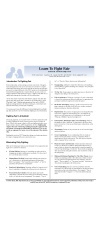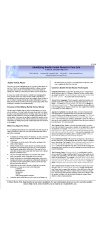Coronavirus isn’t the only pandemic going on. While we live in a society that seeks out people to blame for our problems either personal, corporate or societal, I can’t recall a time where it’s impossible to go even a few minutes without coming across people who are spending their time trying to pin the tail on the blame donkey.
The following was written a number of years ago as advice to those in the working world, and in particular managers and leaders. It’s part of a planned series on blame to be completed in the next month.
Now is not the time to blame, but to find constructive workable solutions AND to identify flaws in responses to the coronavirus so we can be better prepared in the future.

There’s a difference between BLAMING and holding people ACCOUNTABLE. Blaming in an emotional act that causes fear, discomfort and strong dislike.
We live in a blaming society. Whether one looks at politics, organizations, or even personal relationships, we, as a society, seem to place great importance on finding some entity or person to blame for almost everything. Political parties blame each other (watch any governmental body meeting or election campaign). Unions blame management. Management blames union. Spouses blame each other.
Perhaps it’s just part of our natures, or the way we are brought up, but it seems that we are unable to separate the process of blaming from the process of making things better. This separation is of critical importance if we are to improve anything anywhere, but particularly applies to the workplace. While Edward Deming tells us to “drive out fear”, we should also be prepared to “drive out blame” from our workplaces. Perhaps the single most important barrier to improvement is blame!
To understand the issue, we need to make some very important distinctions among terms…terms that will help us to recognize the destructiveness of the blaming process.
Blaming refers to an emotion-filled process where we assign responsibility for a past event, but also assign a negative emotions to that responsibility. The blamer is attempting to avoid responsibility by pointing to someone else, and may be experiencing fear, anger or other feelings. The receiver (or blamee) tends to experience loss of face, embarrassment, fear and anger.

The problem with the blaming process is not so much to do with responsibility (which is a good thing), but with the emotions that are attached to that responsibility. People who are experiencing anger, humiliation, Esc are not likely to focus their energy of solving or preventing a problem from occurring. Clearly, they will be oriented toward defending themselves from experiencing the negative emotions attached to blame.
Taking or assigning responsibility is a subtlety different process. First, it can apply to past, present or future events, where blame is almost exclusively focused on the past. Second, assigning responsibility does not have the excess emotional content of blaming. Responsibility language is different than blaming language. As a manager, you may assign responsibility for a task without assigning blame. And you can hold someone accountable for results without blaming, also. Sometimes the distinctions however lie in the delivery of language, even the tone of language. Take a look at the following two statements:
“If you had done your work on time, we wouldn’t be in this mess”.
“Your responsibility is to fulfill your work commitments on time”. When your work wasn’t available I had to speak to the Minister (Secretary) without the information I needed.”
Even without hearing the tone we can see that the first statement sounds somehow like blame…that the mess is the employee’s fault. The second is more of a factual statement, and lacks the emotional content of the first. Also, consider which of the statements above is more conducive to improving things, or preventing delays of this sort in the future. Which is a prelude for problem-solving, and which is a prelude to argument?
Problem-Solving is the third term we need to define. The hallmark of a problem-solving process is that it is focused on the present and the future. It’s goal is to fix something occurring now, or prevent something from happening again. It is THE critical process for improving organizations, individual performance, and relationships. Non-blaming problem-solving lacks the negative emotions attached to blaming, and allows a more harmonious approach to the issue, since it’s purpose is not to find a donkey to pin a tail on, but prevention. It is less personal and more systems-oriented.

Often the problem solving process rests on an understanding of the past, and an understanding of the causes or root causes of a particular issue. It may include:
- clarifying the problem solving goal or purpose
- collecting data to help understand past and present
- diagnosis (identifying sources of the problem)
- formulating hypotheses for explaining
- formulating a strategy for addressing the problem
- evaluating the strategy (more data collection)
However, nowhere in problem solving is their a need to assign blame, or create the kinds of humiliation and negative emotions that accompany blame.
Problem solving is a complicated process, and Total Quality Management leaders (Deming, Crosby, Juran) have added much to the discussion of how one goes about problem-solving. In fact, one senior manager in government commented that the TQM material is simply an extensive, efficient and more advanced method of solving problems.
What Does This Mean For Managers & Leaders?
Whether you are interested in continuous improvement, organizational health, or simply want to undertake a performance management approach more effectively, the issue of blame versus problem solving is critical. Not only can you forge better relationships with staff by focusing on problem-solving rather than blame, but you can also influence the degrees of blame that is shown by staff to other staff, political department heads, and even customers. Your position in the organization places you firmly as a model for appropriate problem-solving, and anti-blaming behavior. If you show blaming behavior. you can be sure that your self will return the favor, often blaming you in turn (often covertly — you will never know). Consider the following suggestions:
1.When problems or issues occur (e.g. lack of performance, failure to keep commitments,etc.), and you feel obligated to intervene, use a problem-solving approach. Begin the process by trying to understand (WITH the employee) the actual problem, and what lies behind it. Knowing, for example that poor performance may be a result of boredom, personal stress, lack of skills or knowledge or other larger systems issues (lack of equipment, authority, etc.) and so on allows you to work with the employee to attack the root problem, to PREVENT it from reoccurring. But one important part to note. Problem-solving does NOT mean looking for excuses for the employees behavior. (that’s the blame game still). The employee is still responsible for the consequences of their actions and future actions, but the focus is on the future. Again, let’s look at two dialogues:
Manager: John, you should have notified me that this work wasn’t going to be ready for the meeting. We all looked stupid in front of the boss, and it’s going to take us days to recover.
John: I tried to tell you but you were on vacation, and I forgot. You are very hard to get hold of, you know.
Manager: You could have called me at home.
John: I didn’t want to bother you with it..since you said not to call unless it was an emergency.
Can you guess where this conversation will go? Already you see that the initial statement, rather than trying to uncover the cause of the problem, focused on the past, on what should have been done, and activated the defense of the employee. So, in fact one person is “attacking” in a subtle way while the other is defending. If this continued, and someone didn’t give up, both would end up attacking. Contrast this with:
Manager: John, I was expecting to have the brief from you before my meeting. We need to figure out what happened and how to make sure that it doesn’t happen again. Was I not clear on the date, or was there some other thing that popped up that caused us to miss the deadline?
John: Well, I might have misunderstood about the urgency, and when you went on vacation, I didn’t want to bother you at home.
Manager: Ok, well, how does this sound. If I need something on an urgent basis I’ll make sure that I tell you in future. I can also let people know when it is OK to call me at home, so it will be easier. I am also going to ask you to please keep me informed, though on projects like this so we won’t be embarrassed again. Does that make sense?
John: Sure…I have a few more suggestions that might help…
If you compare the dialogues you can almost “feel” the difference. The first sounds blaming, emotional and past oriented. The second is neutral, aims to figure out where the problem lies and works to prevent reoccurrence. Of course, problem-solving dialogues don’t always go this smoothly, and this example is probably over-simplified. It may be necessary to delve further into root causes than is shown above.
2. As a manager your role extends beyond your direct interactions with a single employee, but includes modelling problem-solving in everything you do, particularly at staff meetings and other gatherings. Not only do you use problem-solving but you “steer” blaming conversations back to problem-solving and back to prevention. Employees may attempt to blame one another, or blame some “shadowy they” for difficulties. Your job is to quickly turn the conversation back to “What can we do, then, in future?” Expect and insist on staff taking responsibility not just for identifying problems (often in the form of complaints), but for suggesting workable, positive and constructive solutions to those problems. When you start doing this you begin to create a “blameless culture”, and a “responsible culture” that discourages empty complaints, “bitching” and personal vendettas that will put you in the middle of other people’s disputes.
Closing Points
We began by discussing our “blaming society”, and we need to revisit it. Moving from blaming to responsibility and problem-solving is a tough slog, because you will find that many people will not discern the differences. For some, being responsible also means to be at fault, to be culpable or to blame. Some people are sufficiently insecure or sensitive that any attempt to have them take responsibility (even for the future) will evoke a defensive and emotional response. Hence, even though YOU may make the transition, some of your staff will still see you as attempting to blame. Your response to those situations is to return to the problem, to continue to ask diagnostic questions, to develop understanding of root problems, etc, and to avoid being drawn into the “blame game” and the emotions that are associated with it. Hopefully after a period of consistent problem-solving behaviour on your part, some of those people will begin to see the difference, and to trust that you are not blaming, but “fixing”.






